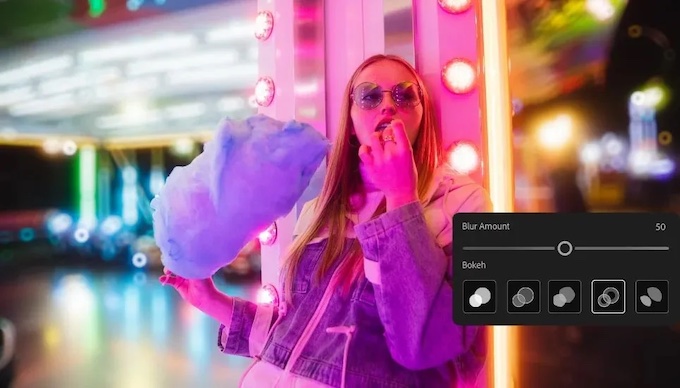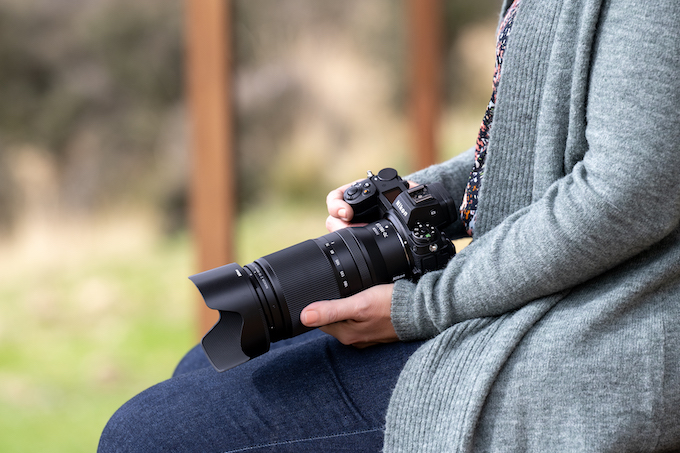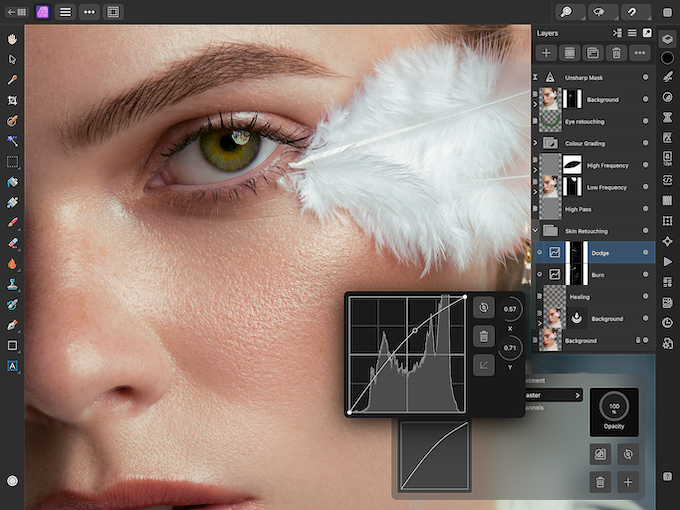Software
It has only been one year since Macphun released the original version of Luminar, but much has happened this past year. For one, Macphun has changed its corporate name to Skylum. But the big news is a major update to Luminar with significant performance enhancements and new filters, and the release of a Windows version.
As of release 1.0.2 that I am reviewing on both platforms, the feature set in the Windows version lags significantly behind that of the Mac version. Where this occurs, I shall do my best to point it out. However, Skylum is promising a rapid schedule of Windows updates to bring the two versions on a par with one another. Also promised for release in 2018 is a digital asset manager module that will allow you to organize, rate, flag, and create albums from you photos.
New in Luminar 2018 for the Mac and also available in the new Windows version is a revised Filters menu, advanced RAW file develop tools, third party Adobe plug-in support, look-up table (LUT) mapping, and several new filters.
Luminar 2018 functions as a stand-alone program, but you also have the option of installing it as a plug-in to Adobe Photoshop and Adobe Photoshop Lightroom on both Mac and PC. The $69 license fee for new users includes the software for both platforms and allows installation on up to five Mac or Windows computers. Existing users can update for $49.
For Windows users unfamiliar with Luminar or Mac users that have not given it a try, the program offers presets for quick edits. For more advanced users there are tools, called “filters”, for customizing the presets. It features a non-destructive workflow, RAW file processing and conversion, layers with blend modes, masking, workspaces for specific types of photography, and the ability to customize and save workspaces for an individual photographer’s future use. You can save edited images in Luminar’s proprietary file format, preserving all edits, layers, and history, or export the image in common file formats, including PSD, but without the layer information.

After opening an image, one possible first step is to choose to apply an appropriate preset from the Presets Categories.
User Friendliness
The user interface is simple, elegantly beautiful, and highly customizable. There are times when you open an image that you know exactly what you want to do with it. But there are other times when you want to experiment because you don’t know in what direction you should go. For these latter times, Luminar offers sets of creatively designed presets to get you started. These are available by clicking the Categories tab below the preview window. Available preset categories are Basic, Dramatic, Outdoor, Portrait, Street, Travel, and Aerial. You can download additional presets from the Skylum website and create your own presets. If you use a preset, the Filters panel to the right of the preview image displays the adjustments that created it and you can refine them further and add additional adjustments.

You can add adjustments (filters) manually or use a custom workspace appropriate to the image you are working on.
If you choose not to start with a preset, Luminar 2018 provides an extensive range of image adjustment tools, close to the range offered by Lightroom and Photoshop. You can begin by choosing a custom workspace. These highly customizable workspaces allow you to configure sets of tools for the type of images you commonly create. Through a tab just below the filters fly out in the right panel, Luminar offers eight custom workspaces: Professional, Quick and Awesome, Essentials, Aerial Photography, Black and White, Landscape, Portrait, and Street. These workspaces gather the appropriate tools (called “filters”) that you would commonly use for that type of image category. The Professional workspace provides access to pretty much everything available.

You can place the new Sunrays filter anywhere inside or outside of the frame. Many other options are also available for adjusting the filter.
You can also begin with a clear workspace and select the filters to use as you go. Luminar provides the ideal solution by allowing you to add the tools and filters that you commonly use for your work and save this as a custom workspace for future sessions.
What Works
The new features in Luminar 2018 add significantly to the already feature-rich initial release of Luminar that was only available for the Mac. The new Filters flyout for the Mac categorizes the filters into logical groups by use. I find this a big improvement over the previous alphabetical listing. Unfortunately, for me, the Windows filters are still listed alphabetically requiring me to read through them when I can’t remember the precise name of the filter I need.
Where the previous version of Luminar automatically processed your RAW image before opening it in the preview window, Luminar 2018 provides a new RAW Develop filter with sliders for common manual adjustments as well as lens corrections and transform tools. AW file conversions yield high quality results, but with a little more effort than in other programs. If you are working on a TIFF or JPEG image, the RAW Develop filter becomes simply “Develop” and you have access to the same tools.
The other new filters provide increased functionality. They include filters for DeNoise, Hue Shift, Matte look, Sun Rays, LUT Mapping, Dodge & Burn, and Brilliance/Warmth. The Matte filter provides a quick way to mute the tones in your image and give portrait, wedding, and even landscape images a vintage, pre-digital treatment. The new Sun Rays filter may not find a lot of use, but it does a very nice job of adding beams of light where appropriate, and the range of controls provide lots of options. Other programs offer a filter like this, but the Luminar engineers really nailed it.
To me however, the most intriguing of the new filters is the LUT Mapping filter. Look-up table (LUT) files are available for download at many places on the internet. They offer cinematic looks, classic film looks, and more. Luminar includes 16 LUTs and supports the common LUT format for downloading and installing others.
Also worthy of mention is the ability of Luminar to function as a Lightroom and Photoshop plug-in. Both perform flawlessly so if you feel completely tied to those programs you can still take advantage of the features in Luminar, especially the presets, without abandoning Adobe. But you may find that you are doing more and more work in Luminar and less in the Adobe products.
What Didn’t Work
Realizing that Luminar is still in its infancy as an image processor, finding fault is really only a way of offering suggestions for future updates. For example, in the new RAW Develop tool, the adjustments extend too far out of their named region. For example, the Black adjustment extends nearly into the highlights and the shadows adjustment darkens the midrange. The Lens tab only provides for manual correction of lens distortion and chromatic aberration, and the Transform tab is completely manual also.
There are some features that are missing or oddly implemented. For example, an image can only be resized when exported and you can only crop an image using aspect ratios, not pixel size. And, while the histogram has shadow and highlight clipping indicators, the triangles are nearly as impossible to see when the indicators are off as they are by default. I wonder how many users are still wondering why there are none. And I imagine even advanced amateurs to say nothing of professionals would like to know the RGB values under their cursor.
Finally, Windows users can look forward to eventually having a free transform tool, clone and stamp, additional export file formats (such as PSD) and any other features not yet implemented from the Mac version.
How it Compares
At present, Luminar on the Mac handles most of the tasks that photographers commonly do in Adobe products and the Windows version is catching up quickly. With the promised cataloging module coming in 2018, Luminar will be a killer photo app at an unbelievably low cost and mountable on five computers.
Of the other major image editors with presets, e.g., Lightroom, ON1, etc.), Luminar’s single interface makes it the easiest to navigate and one of the fastest to achieve results. Luminar needs work in many areas, including exporting and printing, but from its growth in the last year Skylum seems committed to making Luminar are real contender.
Also of note is Skylum’s update to Aurora HDR software and the introduction of Aurora HDR 2018 to the Windows platform. Again, the Windows version is lagging slightly behind the Mac, but it’s continuously closing the gap. If you are interested in doing HDR, Aurora HDR 2018 is available for $99. Existing Mac users can upgrade for $59.
The interface is completely redesigned, new filters and presets are added, and, like Luminar, you can install it on five devices. Also like Luminar, Aurora HDR 2018 operates as a stand-alone program as well as a plug-in for Adobe Photoshop, Adobe Lightroom, Apple Photo and Aperture, and Luminar.
Stan Sholik is a commercial/advertising photographer in Santa Ana, CA, specializing in still life and macro photography.





